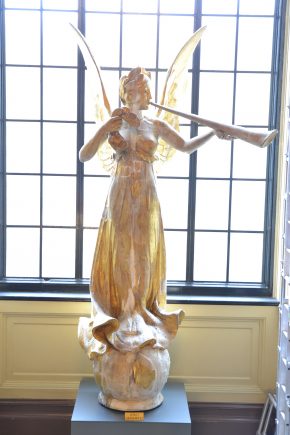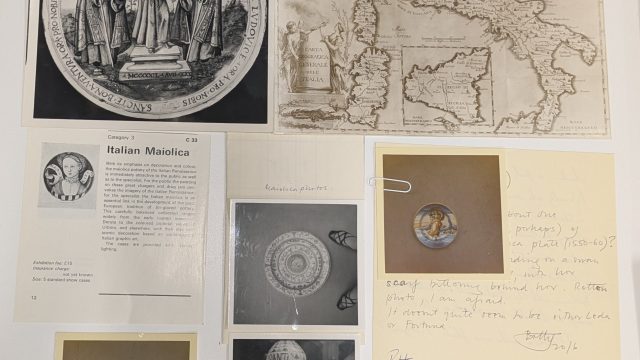This series of blog entries is about the scientific examination of the gold finish of the Spirit of Gaiety, the angel which once graced the dome of the Gaiety Theatre in London.

Elemental analysis*
In my last blog I showed you what the layer structure of the Spirit of Gaiety looks like under a powerful microscope: we know now that there are four different paint schemes, each of them hinting at what the Angel must have looked like at different stages of its life.
But what is the composition of each metallic finish the Angel was painted with? Hopefully X-ray fluorescence (XRF for short), a scientific technique which reveals what chemical elements are present in our samples, will tell me.
Or so I thought… XRF was in fact very quick at showing me that the Angel is covered in real gold leaf, as I already suspected (see Figure 2). But it did not help at all with the second and third metallic finishes, the ones that look silvery in colour; and even for the first scheme XRF could only suggest, but not confirm, that brass might be present.

There are also factors which can interfere with my XRF experiments, due to the very small size of my samples: for example, in addition to the metallic finishes I may be detecting the pigments contained in the white, yellow and orange paint layers nearby. The presence of gold is the only result I can be certain of at this stage.
It was at this point that I decided to ask our good neighbours across the road for assistance: Dr Tomasz Goral at the Natural History Museum analysed one of my samples using scanning electron microscopy with energy-dispersive X-ray analysis (also known as SEM-EDX) and provided wonderful maps of the distribution of the elements in my sample, one of which is shown in Figure 3.

Tomasz’ experiments revealed that the two mysterious silver-coloured finishes are made with aluminium paint!!! And also that the first metallic scheme contains a copper alloy made of copper and small amounts of zinc and tin.
The presence of aluminium is rather unexpected and with the help of my V&A colleagues I am still pondering on the significance of this particular finding.
Next I shall investigate the composition of the pigment layers: is there any special pigment that can help me date any of the paint schemes? Stay tuned and I will let you know in a few days’ time.
*Elemental analysis: any type of scientific technique which can tell us what chemical elements are present in our samples or objects.



Then you are lover of internet browsing.This is the good time pass . when i am free to our busy sou dual to play more exited games this is the one of them. You have enjoy any movement this game.